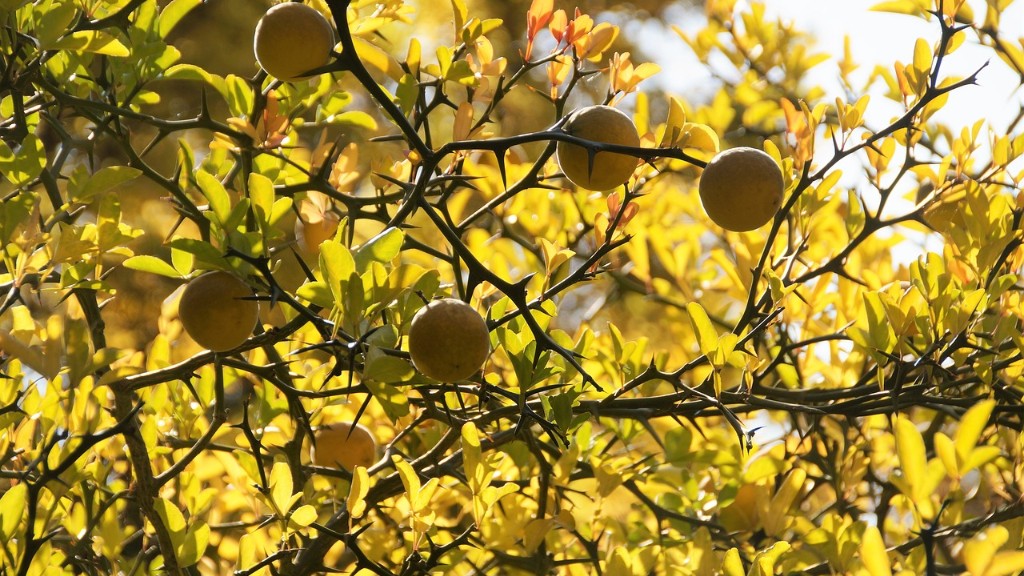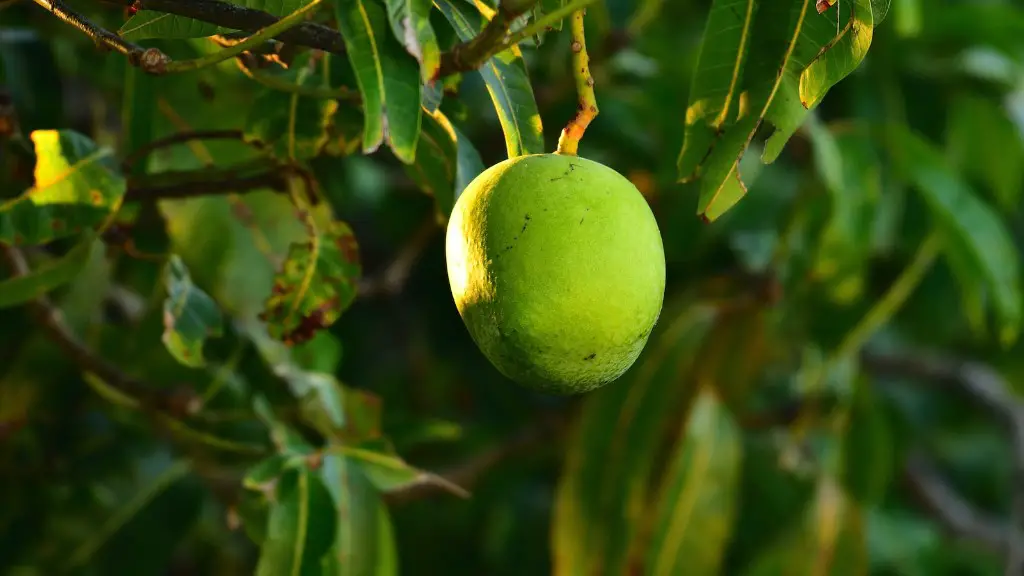Finding the right lemon tree for your garden can be a bit tricky. Fortunately, there are a variety of places you can turn to. Here are some options for locating a lemon tree near you:
1. Local Nursery: You could start your search at a local nursery or gardening center. Nurseries typically have a wide selection of trees, plants, and flowers to choose from. It’s important to ask questions and make sure you’re getting a healthy lemon tree with good stock. In some cases, your local nursery may even have lemon trees for sale.
2. Growers Market: Another option is to visit a nearby growers market. These markets are a great resource for finding different types of fruits and vegetables. If you live in a more rural area, chances are you’ll find a variety of lemon trees for sale.
3. Online Vendors: If you’re having a hard time locating a lemon tree in your area, there are a number of online vendors that specialize in selling various trees and plants. You’ll usually be able to browse through their selection online and have the tree delivered right to your doorstep.
4. Neighbors and Friends: You may be surprised to learn that some of your neighbors or friends may have a lemon tree in their yard. Ask around and see if anyone you know has a lemon tree they’d like to share or sell. Keep in mind that most lemon trees can take a few years to produce fruit, so patience is key.
5. Home Depot and Lowe’s: If all else fails, you can also try Home Depot or Lowe’s as a last resort. While you won’t find the most diverse selection, you’re likely to come across a few lemon trees that could be suitable for your garden.
Growing Conditions
Before selecting a lemon tree for your garden, it’s important to take into account the climate and growing conditions. Lemon trees are more likely to thrive in warm, sunny climates with mild winters. Additionally, lemon trees prefer well-drained soil rich in organic matter. It’s important to water the tree on a regular basis and provide it with the necessary nutrients for optimal growth.
If your climate, soil and conditions aren’t ideal for lemon trees, you may want to reconsider your purchase. In this case, you may want to opt for a different type of citrus tree that can thrive in your area. For example, some types of oranges and limes may be able to adapt to different conditions and still produce delicious fruit.
When selecting a tree in a nursery, be sure to examine it closely for signs of disease or pest damage. The tree should have shiny foliage and no visible signs of insects or mold. Remember that the health of the tree is key to its survival and overall growth.
Caring for A Lemon Tree
As with any plant, a lemon tree will require proper care in order to thrive. Make sure to provide it with the appropriate amount of sunlight and water to encourage healthy growth. Additionally, it’s important to prune the lemon tree to control its shape and growth. Pruning will also help the tree produce more fruit.
It’s also important to fertilize the lemon tree on a regular basis. Fertilizing will help promote flowering and fruiting. Organic fertilizers are a great choice since they provide the plant with essential nutrients without introducing harmful chemicals into the environment.
Furthermore, it’s important to keep the tree’s foliage free from pests and diseases. Regularly inspect the tree for signs of infection or infestation and take steps to address the issue accordingly. You may also want to try covering the tree with a net or placing sticky traps around its exterior to keep away unwanted pests.
Harvesting
When the lemon tree has a full bloom of delicious lemons, it’s time to harvest. Once you’ve determined the right time to pick the fruit, be sure to use sharp pruning shears to cut the stem of the lemon. Make sure to wear gloves when picking and harvesting the fruit to keep your hands protected.
Harvesting too soon can lead to a sour and bitter tasting fruit, so it’s important to wait until the lemons are ripe and full of juice. You can tell when the lemons are ripe by their color and size. Additionally, the rind should give a bit when you press on it with your fingers.
Once the lemons are harvested, you’ll need to decide how you want to use them. You can use them for cooking, baking, and juicing. And, of course, let’s not forget about the classic lemonade. It’s one of the tastiest and most refreshing summertime drinks.
Propagation
If you’d like to increase the number of lemon trees in your garden, you can try propagating them. This can be done by taking a cutting from an existing tree and planting it in a new container. Make sure the cutting is at least 6-8 inches long and choose a container with well-draining soil. The soil should be kept moist but not waterlogged.
Once the cutting has been planted, you should place it in an area with indirect sunlight and keep it moist with regular watering. In about 4-6 weeks, you should be able to spot some new growth. After about one year, the new tree should be ready to be transplanted in the ground.
Pests and Diseases
Like with any other tree in the garden, lemon trees can be affected by pests and diseases. To avoid this, make sure to regularly inspect the tree for signs of disease or infestation. Common pests that may affect the tree include aphids and mealybugs. To address these infestations, use organic pesticides or insecticides.
Some of the most common diseases affecting lemon trees are citrus greening, brown rot, and Phytophthora. If your tree is exhibiting symptoms of disease such as yellow or brown leaves, it’s important to act quickly to address the issue and prevent further damage. Professional advice from a local arborist is recommended in these cases.
Conclusion
Selecting the right lemon tree for your garden is the first step towards having a fruitful harvest. To pick the perfect lemon tree for your needs, scan through the alternatives, including local nurseries, growers markets, online vendors, Home Depot and Lowe’s, and even asking around to your friends and neighbors. Additionally, it’s important to be aware of the growing conditions required for the lemon tree to thrive, such as ample sunlight, good soil, and consistent watering.
Caring for the tree, once you’ve procured it, is also key to having a successful growing season. This includes pruning, fertilizing, pest management and disease prevention. When harvest time comes, be sure to protect yourself with gloves and harvest with sharp shears to ensure the same-day ripeness of the fruit. Finally, for more lemon trees in the future, you can try propagating them by taking a cutting from an existing tree and carefully planting it in a new container.




